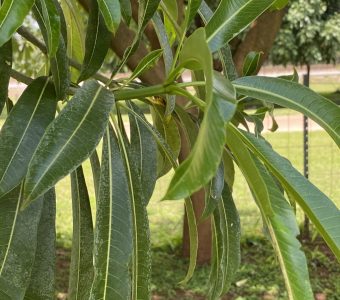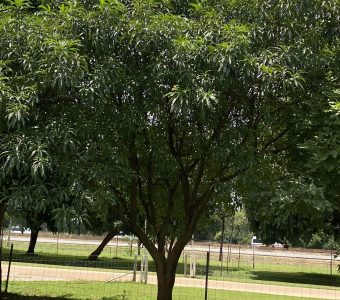

Botanical Name: Ximenia caffra
Common Name: Sour Plum, Mulebe, Mulutulwa, Musongwasongwa, Muvulama, Kamulebe, Muchonfwa .
Plant Family: Oleaceae (Olive Family).
Growth Form, Habitat and Distribution: A semi-deciduous shrub, scrambler, or small tree, with spine-tipped branches bending over. Occurs across Zambia, mainly in Acacia and Munga woodland, wooded grassland, rocky areas and termite mounds. Ximenia americana is very similar, but with oblong, upward-folded, hairless leaves.
Size: Height up to 6m, usually smaller, spread 5 to 7m.
Bark: Grey, or dark grey, rough and scaly on older plants.
Leaves: Simple, in spine axils or clustered on lateral spurs, oblong to elliptic, 2 to 3cm, bluish or grey-green, hairless, the base and the apex both slightly rounded. Petiole short, 10mm.
Flowers: Small, creamy white petals clustered among the leaves in the axils of spines, or lateral shoots with 1 or 2 flowers per stalk, September to December.
Fruit: Olive-shaped, smooth, thinly-fleshy drupe (2.5cm), yellow to bright red when ripe with bitter orange flesh containing a single seed, ripening November to March.
Uses: The wood has a sandalwood scent and turns well. Branches are used for bows and bow strings. The fruit are edible and can produce a jam or a drink. The seeds yield a non-drying oil used in cosmetics but contains toxic hydro-cyanic acid. The leaves and roots have medicinal properties.
